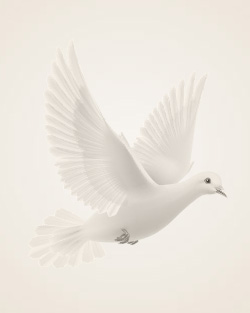Wilfred A. (Bill) Pearce

January 21, 1916 ~ April 2, 2009
Wilfred A. Pearce (Bill), 93, of Wichita, died Thursday, April 2, 2009 at Life Care Center of Wichita. Graveside services will be held at 2pm on Tuesday, April 7 at the Wichita Park Cemetery, 2500 N. Hillside. Bill was born January 21, 1916 in Boynton (Muskogee County), Oklahoma, the only child of Drs. Wilfred E. Pearce and Elizabeth K. Youngman Pearce. A graduate of Boynton High School, Bill received his B.S. in Engineering from the University of Oklahoma in 1937. Upon graduation he moved to Wichita, Kansas to work at Boeing Airplane Co., when the Wichita facility was still called Stearman Aircraft Corp. He worked on the design of the B-29 Superfortress bomber in the early 1940s, and in the fifties, the B-47. In the early 1960s Bill went to work for Lear Jet Corp., where he was influential in the final design of the first LearJet and remained until 1969. He operated Pearce Aeronautics in the 1970s, designing and manufacturing engine conversions for light Cessna and Piper aircraft. He was also employed by the Beech Aircraft Corp. in the 1970s, later returning to Boeing. He married Jane E. Schnitzler on September 15, 1939. She died in 2001. Surviving are his son, Bill (Sue) Pearce of Wichita, his daughter, Mary P. Stuart of Urbana, Illinois, and nephews, Richard Schnitzler of Wichita, Michael Schnitzler of Derby and Matthew Schnitzler of Marble Falls, Texas. In lieu of flowers, memorials may be made to the Jane and Bill Pearce Memorial, c/o The American Red Cross, Midway Kansas Chapter, 1900 E. Douglas, Wichita, Kansas, 67214. Downing Lahey Mortuary East.







Please accept our deepest condolences for your family’s loss.
To the family of Bill Pearce: I was saddened to learn of Bill’s death. I offer my condolences. I immediately recognized Bill’s photo in the newspaper obituary. I knew Bill when he and I worked at Learjet in the 1960’s. He was the supervisor of the Stress Group and I was the supervisor of the Structural Dynamics Group. These engineering groups were in close proximity. Bill and I talked almost daily. Bill was always friendly. I admired Bill because of his professional approach to the problems we faced in Learjet’s early days. Mr. Lear was inclined to take engineering shortcuts for financial expediency, but Bill was thorough almost to a fault. He didn’t allow a report out of his stress group until he was convinced it was everything it was supposed to be. He once told me that he was personally responsible for the conclusions reached in the stress reports even if he hadn’t completed the report himself. He couldn’t be hurried. He was concerned that a structure would be designed, based on his stress report, and it might fail because of an error in the report. I never learned of such a failure. Bill was about one generation older than I. While I was an aeronautical engineer, and even worked at Boeing prior to Learjet as Bill did, I was too young to have worked on the classic WWII planes which Bill worked on. In some ways Bill was present during the golden age of aeronautical engineering. I’m glad he had that experience. I last saw Bill at the post office in downtown Wichita, several years ago. We talked for about a half hour. We hadn’t forgotten our experiences at Learjet. Jack Shelton 608 N. Broadway Wichita, Kansas